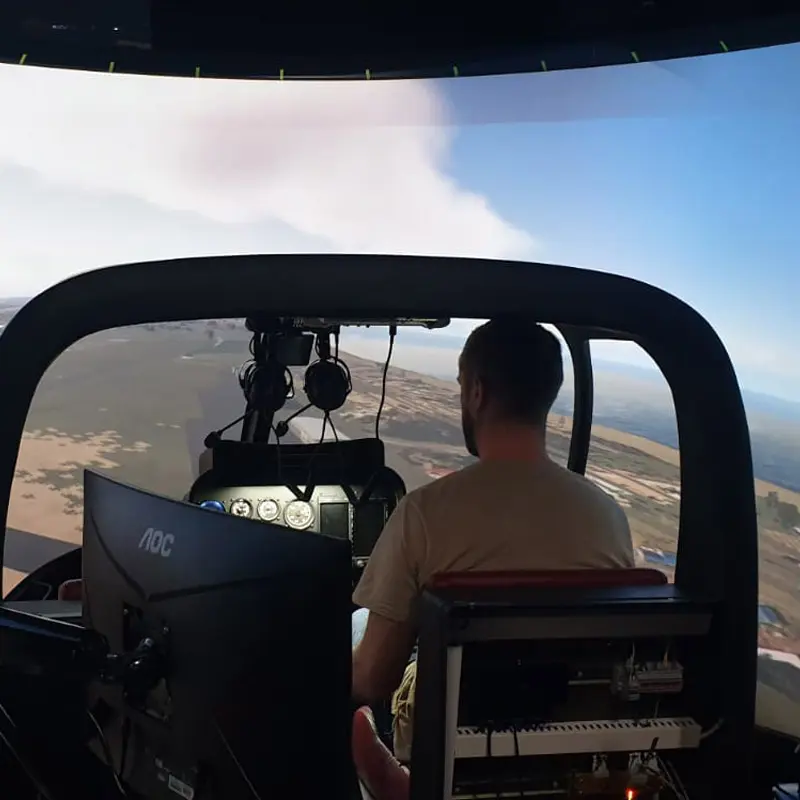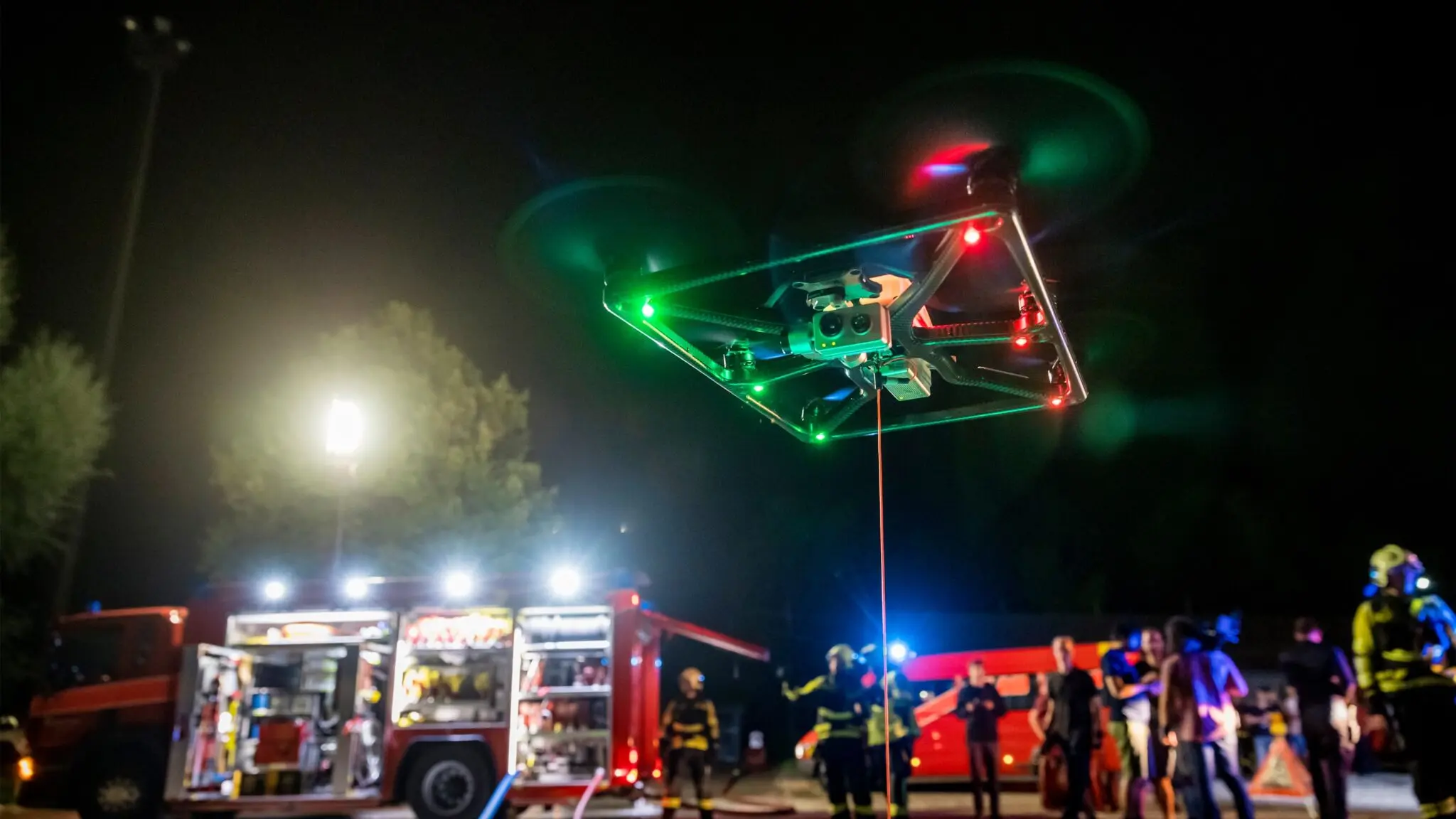The future of training in the public safety sector is ever-changing: today, it includes harnessing new technologies like Artificial Intelligence, Virtual Reality and the Internet of Things, without letting go of teaching hands-on skills vital for community resilience.
Public Safety Training & Response Group embraces both the new and the traditional in its mission to empower individuals and build safer communities that are well-prepared to face emergencies.
New digital technologies are today being used to vastly improve disaster simulations for training, communications and access to information, more efficient data analytics and help deliver more convenient on-demand courses and learning, but hands-on training to deliver practical skillsets and traditional small-group instruction in CPR and First Aid, for example, remain vital to meet the needs ‘on the ground’ during an emergency.

“The future of public training is still around building that community resilience and that’s where the focus needs to be,” says Brenton Clarke, Operations and Safety Manager at Public Safety Training & Response Group.
“There are always new people moving into the community, so you need to keep teaching those basics. It’s very important to get that consistent training.
“But regarding the trends that are coming in, you’re seeing a lot more use of technology and integration – smaller training courses, mobile training courses so people can get those quick learnings, the use of mobile apps and a lot smarter, shorter courses… that people can go in and grab very quickly, rather than the traditional sitting in a classroom and listening to somebody.
“There is still the requirement to meet Standards for Registered Training Organisations for accredited training, but it’s about looking at blended approaches to meet this, as well as short non-accredited courses people can do to build upon their skills and knowledge.”
On-demand courses and learning
Utilising all available tools makes sense to Brisbane-based Public Safety Training & Response Group, which helps build and support community resilience and preparedness by delivering a wide range of services and nationally accredited courses, including CPR, First Aid training, flood response management, swift water rescue, CASA-approved uncrewed drone courses, rescue helicopter skills endorsementsand more – all delivered by expert instructors.
Its head office at Oxley includes two training rooms, a fully equipped incident control room, a media and TV recording and live-streaming studio, helicopter rescue crew training cockpit with winch, and support offices and facilities.
Demand on community and first responders is increasing, and new technologies is improving training for specific emergency scenarios – for example, sitting in a classroom is replaced or complemented by online learning, CPR training is enhanced by realistic mannikins that provide immediate feedback electronically, and VR coupled with the appropriate software closely mimics ‘on-the-job’ emergencies.
Technologies used in applications like flight simulators and video games is making its way into the public safety training sector also.
“We’re moving to a new generation I think in regard to training, and emergency response as well. We’re seeing a lot more VR stuff coming into play, where you put on a pair of goggles, you hold a remote control fire branch for instance, and you can see a fire, you’re putting it out for all intents and purposes,” explains Paxton Barr, Ready Response Manager at Public Safety Training & Response Group.
“This is a new advancement and a great tool to assist in the training of newer members, giving them time and hi fidelity training to prepare them for the real world.
“There’s a lot of that investment in technology as well as integration with technology happening now… for example, you don’t necessarily need to spend thousands of dollars sitting in an actual aircraft when you can get a similar effect sitting in a simulator as a procedural trainer offering hi fidelity training in conjunction with live real-world training.
“Obviously, there is no replacing the real thing, but with a move to a higher standard of VR and safety regulations, it offers a more cost-effective measure that provides a greater opportunity to keep our skills sharp.
“These developments are driving more people to want to undertake a lot more training as well.”

Training for real life incidence
The mix of new technologies and hands-on training mirror the diverse mix of community members who invariably come together to save lives during a natural disaster, from government and emergency services through to community groups and willing individuals, with equally diverse levels of skills and knowledge.
“Resilience is a key factor. It is about how prepared the communities can actually be,” says Mr Barr.
“You get a lot of people that will just jump in and help in a time of need without any formal training or any formal understanding of what essentially is going on… Whereas the resilience side of things really focusses on preparation, how things will be managed, coordinated, what skills people have, and what infrastructure and assets are in place for the community to be able to facilitate any type of response.
“A lot of this comes down to community engagement… it plays a big part in facilitating or at least helping to, one, build resilience and, two, coordination when something like that happens.”
Public Safety Training & Response Group offers training courses that deliver skills to community members and emergency responders to make sure they are equipped to help when a disaster impacts their community. The group’s expert staff are available to discuss training and preparedness solutions with individuals, community groups, business and governments at all levels.
Overall, communities also benefit from practical inter-agency training, preparing emergency personnel for when they will battle a crisis together for real.
“We’re seeing a lot more of the government agencies deliver integrated training, so it’s not just one service looking after its own, it’s multiple services working together or training together to have a common operating platform, or skillset, in certain areas,” Mr Barr explains.
“I think that’s a big motivator for people to undertake the training out of season… And I guess that also leads into the response side as well; you’re seeing a lot more agencies responding to the same event now and having that coalition of training at the same time seems to be a relationship and skills builder rather than creating a silo for each individual agency.”
Training for specific emergency scenarios is supported by AI’s advancements in data analysis, risk assessment, and helping design and direct operational processes – including training needs.
“We are seeing a lot more data that comes through to say that there’s gaps here or there’s a need for this skillset there,” Mr Barr says.
“And again, that focuses on where we can direct people assets and skilled individuals and this leads us and our organisation to bolster our training’, or we can offer the service as Public Safety Training & Response Group to fill that niche gap.”

Here’s are seven current trends in public safety training:
-
Virtual Reality (VR) and Augmented Reality (AR): These technologies provide immersive training environments where public safety personnel can practice scenarios in a controlled, realistic setting. This helps improve decision-making and response times without the risks associated with real-life training.
-
Artificial Intelligence (AI): AI is being used to analyse vast amounts of data to identify patterns and predict incidents, which can in turn help in creating more effective training programs by focusing on the most likely scenarios and improving resource allocation.
-
Internet of Things (IoT): IoT devices, such as wearable sensors and connected vehicles, provide real-time data that can be used to enhance situational awareness and create more realistic and dynamic training scenarios.
-
Cloud Computing: Cloud-based platforms allow for the storage and analysis of large datasets, making it easier to access and share information, supporting collaborative training efforts and improved access to the latest training materials and procedures.
-
Mobile Technology: Mobile devices and applications enable public safety personnel to access training materials and real-time information on the go. This means more flexible training that can be ongoing and integrated into daily operations.
-
Simulation Software: Advanced simulation software can recreate complex emergency scenarios, allowing trainees to practice their responses in a safe environment, building confidence and competence in handling real-life situations.
-
Data Analytics: By analysing data from past incidents, training programs can be tailored to address specific weaknesses, improve overall preparedness, and ensure that training is relevant and effective.
